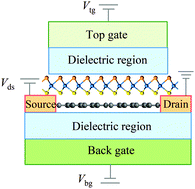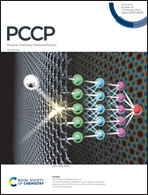Lowering the Schottky barrier height of G/WSSe van der Waals heterostructures by changing the interlayer coupling and applying external biaxial strain†
Abstract
Graphene-based van der Waals (vdW) heterostructures composed of two-dimensional transition metal dichalcogenides (TMDs) and graphene show great potential in the design and manufacture of field effect transistors. However, the Schottky barrier generated by the contact between metal and semiconductor hinders the conduction of electrons, so it is necessary to effectively adjust the Schottky barrier and form a low-resistance Ohmic contact. Based on first-principles calculations, graphene/WSSe (G/WSSe) heterostructures have been established and the corresponding electronic properties have been studied. Firstly, these heterostructures form an n-type Schottky contact with a SBH of 0.35 eV and a p-type Schottky contact with a SBH of 0.66 eV at their respective interfaces. In addition, the Schottky contact can be significantly adjusted by changing the interlayer coupling or applying an external biaxial strain, and an Ohmic contact could also be formed under the biaxial strain. This study not only offers a basic understanding of G/WSSe heterostructures, but also provides a reference for the application of G/WSSe heterostructures in optoelectronic and nanoelectronic devices.



 Please wait while we load your content...
Please wait while we load your content...